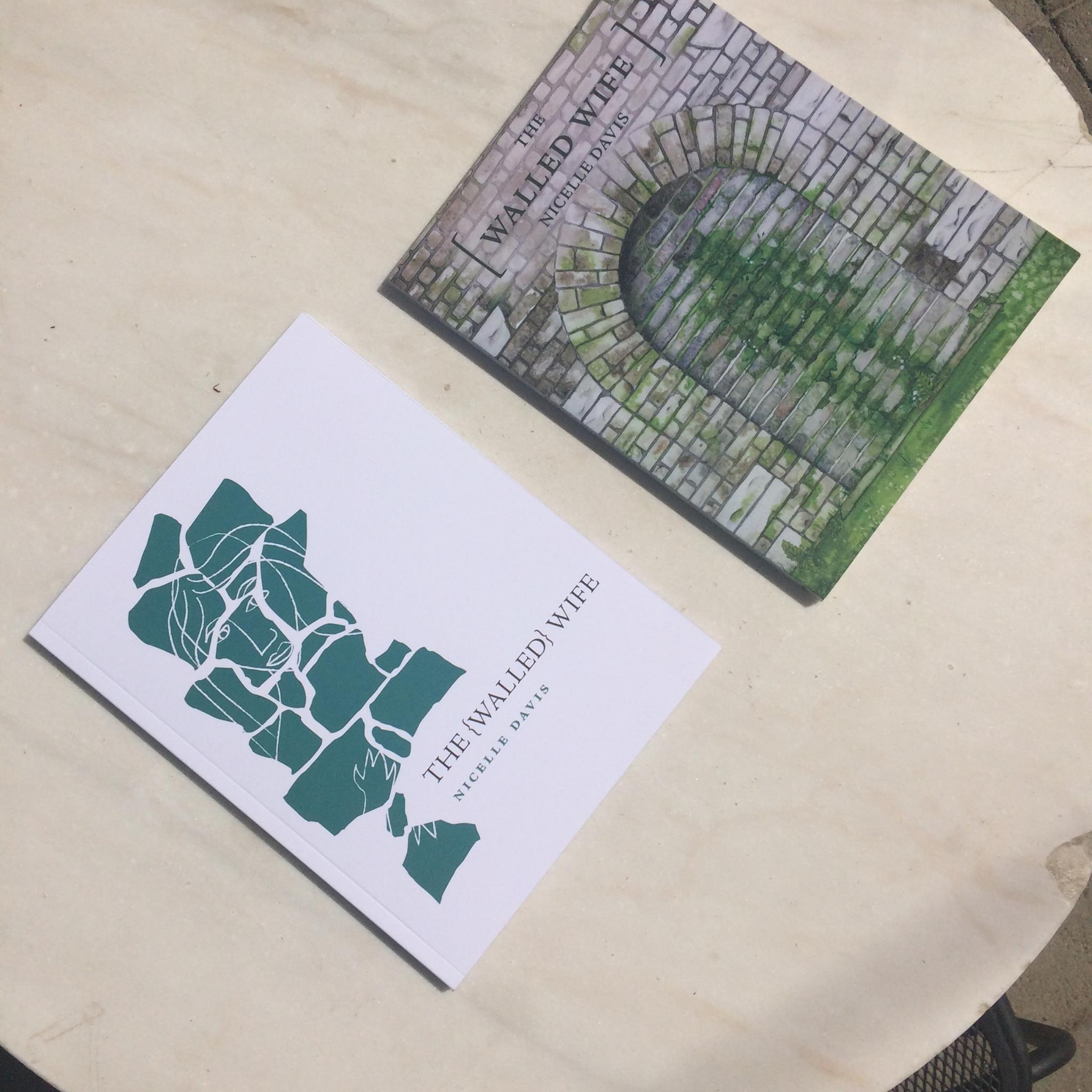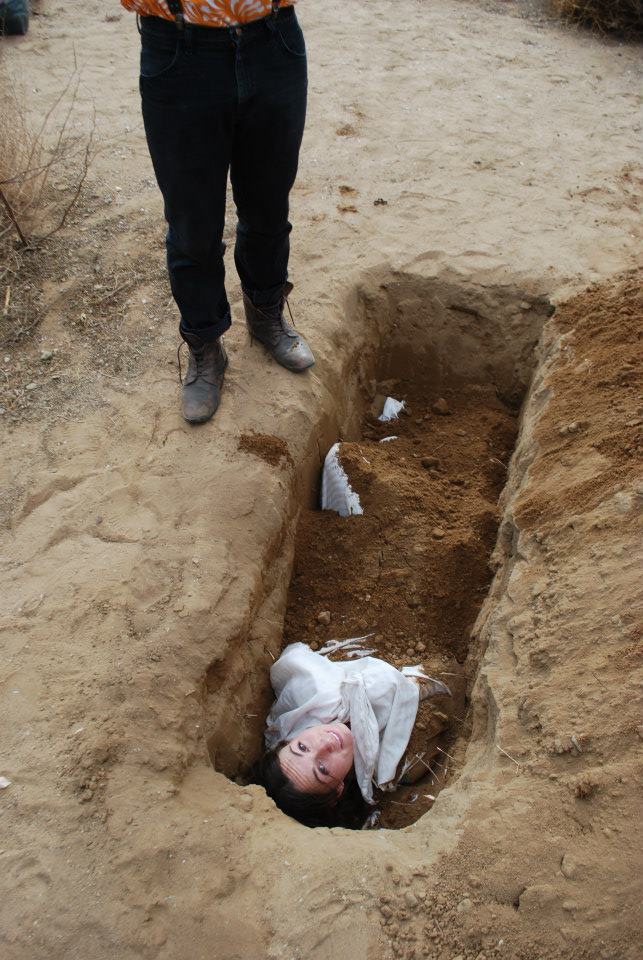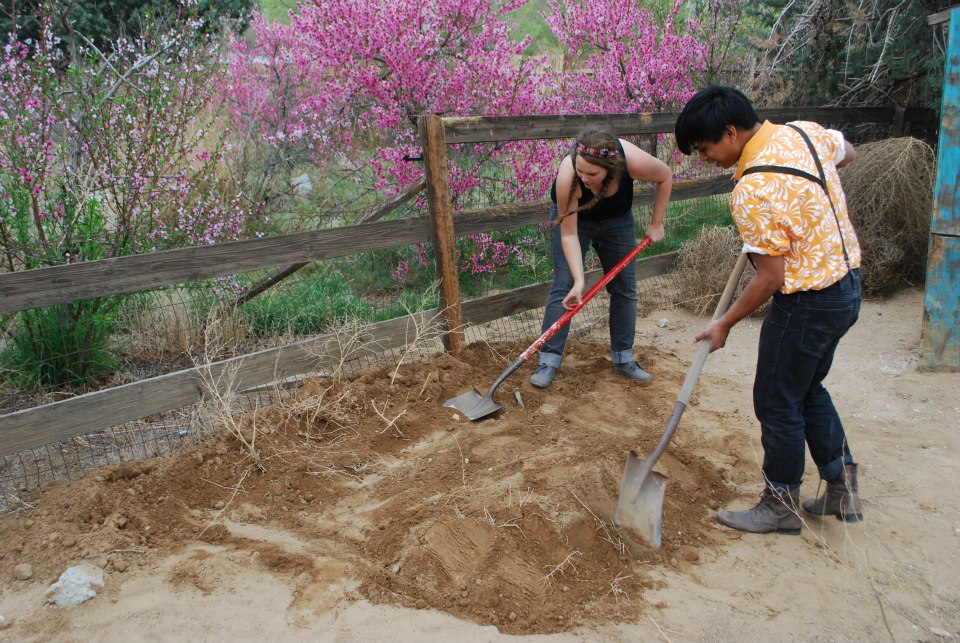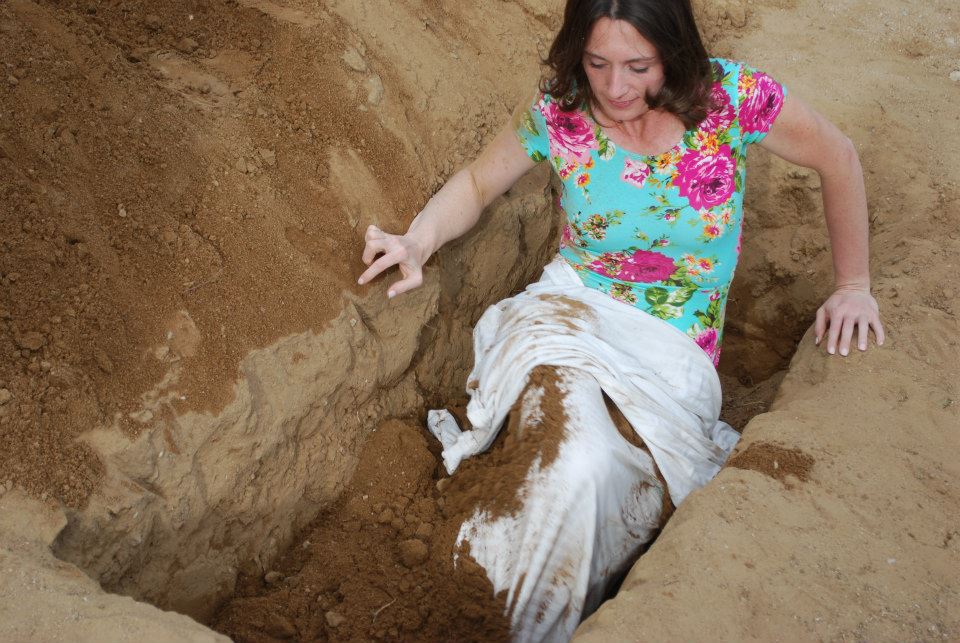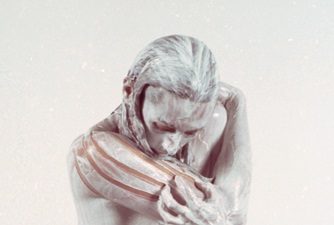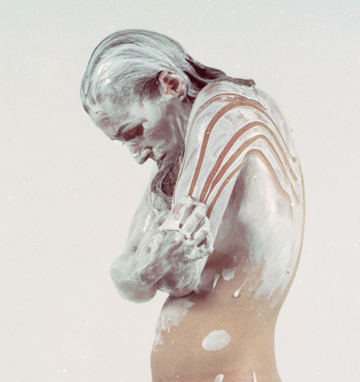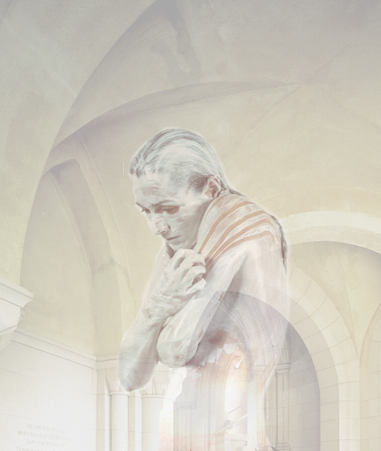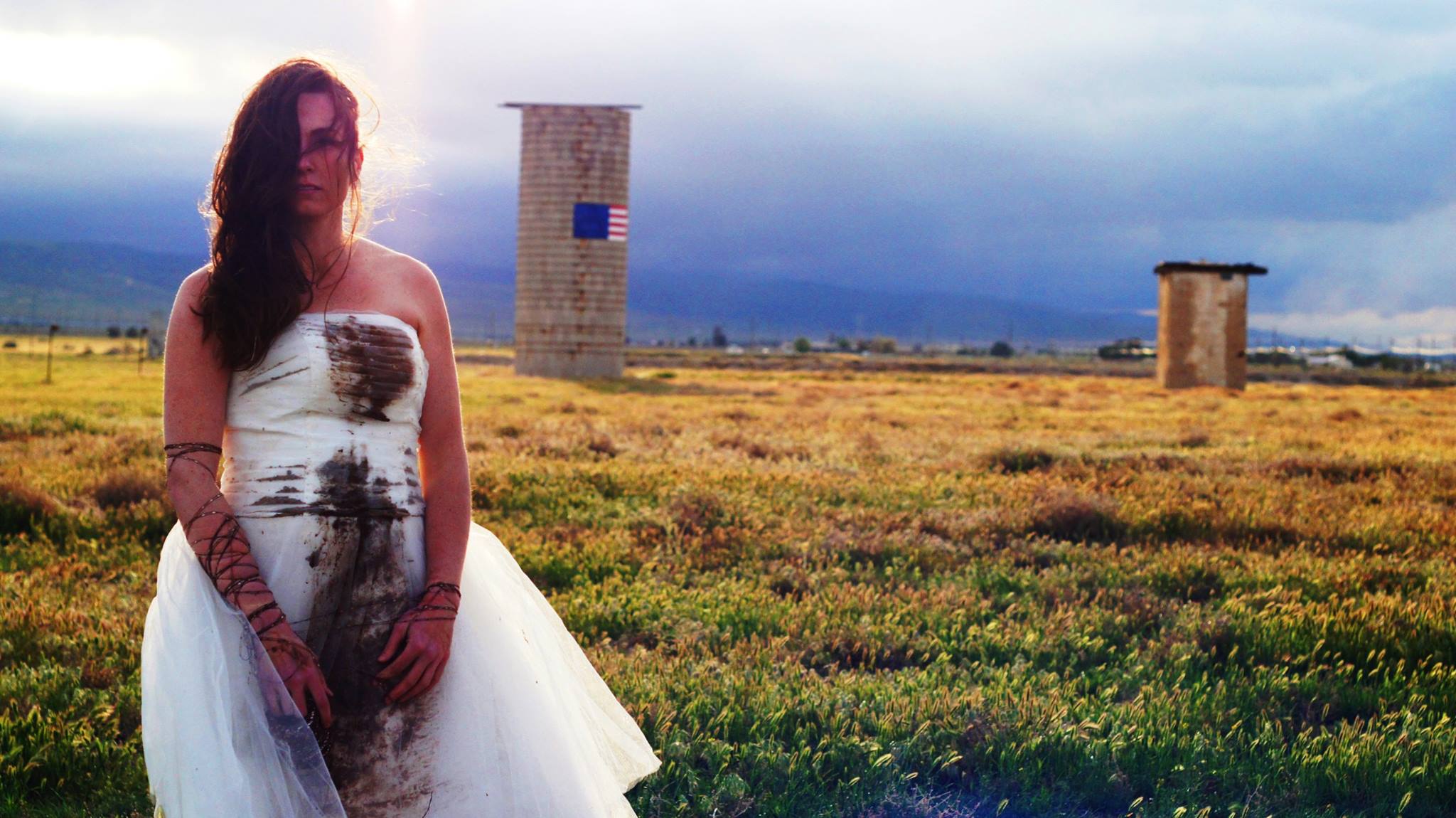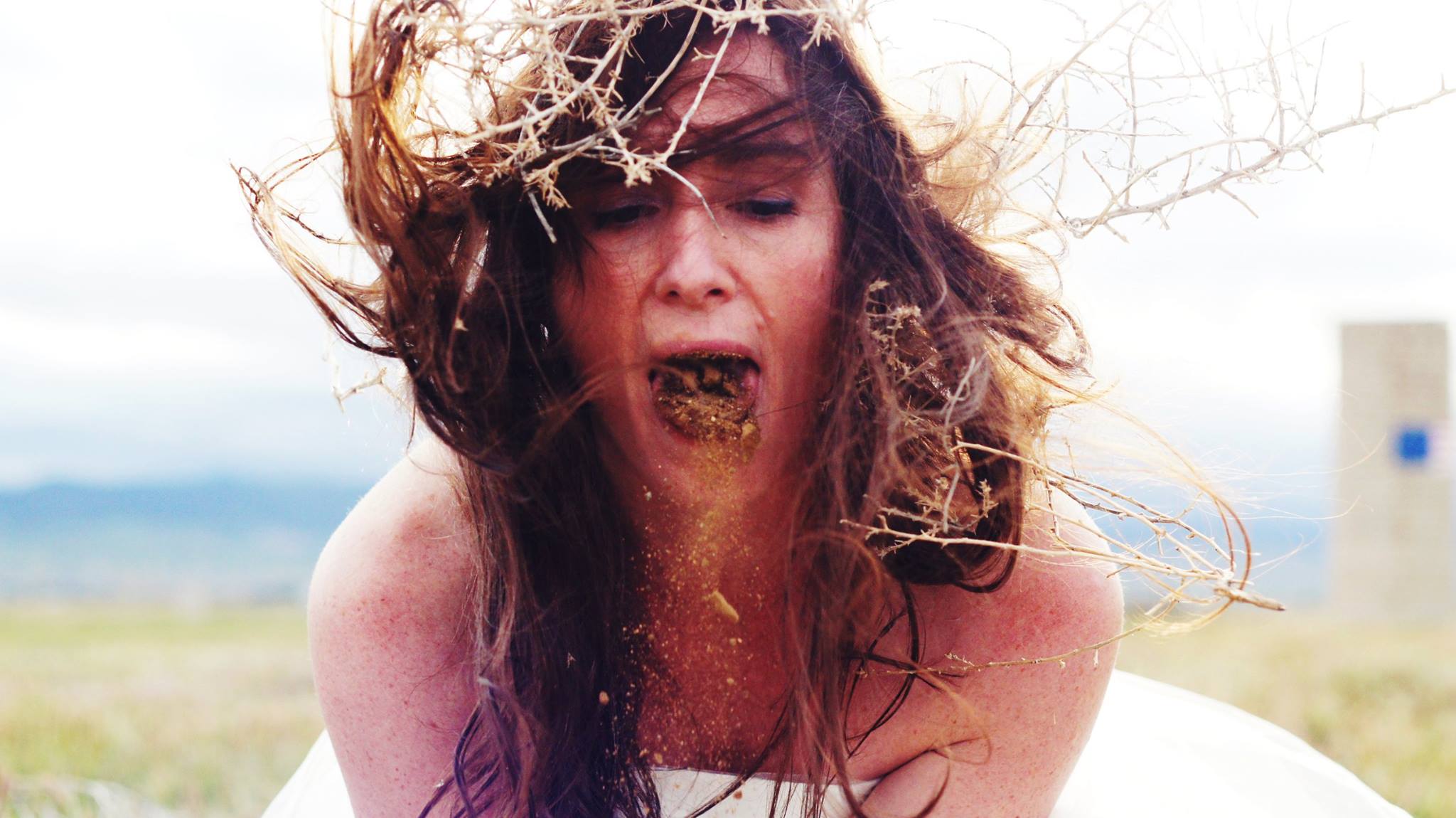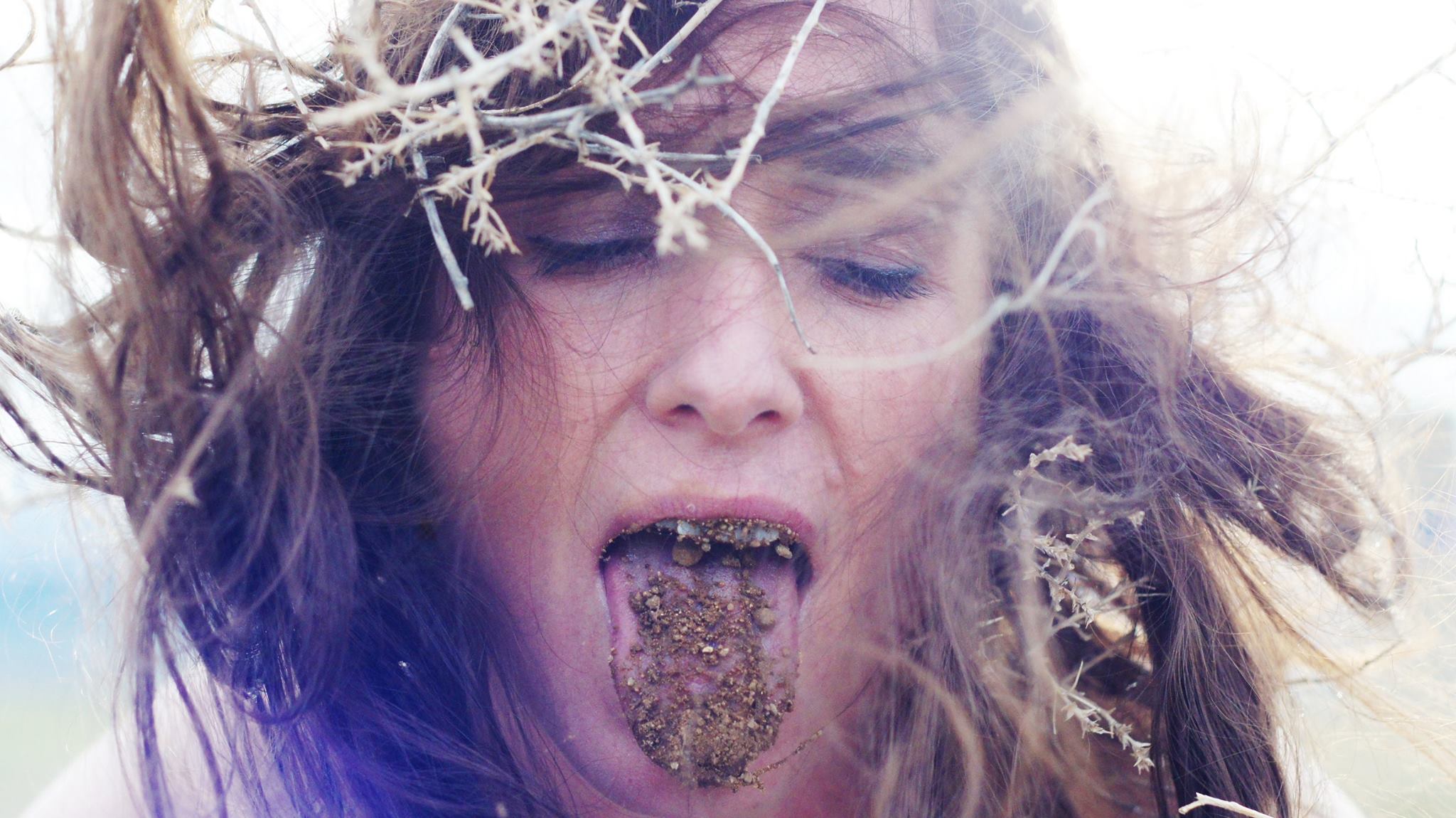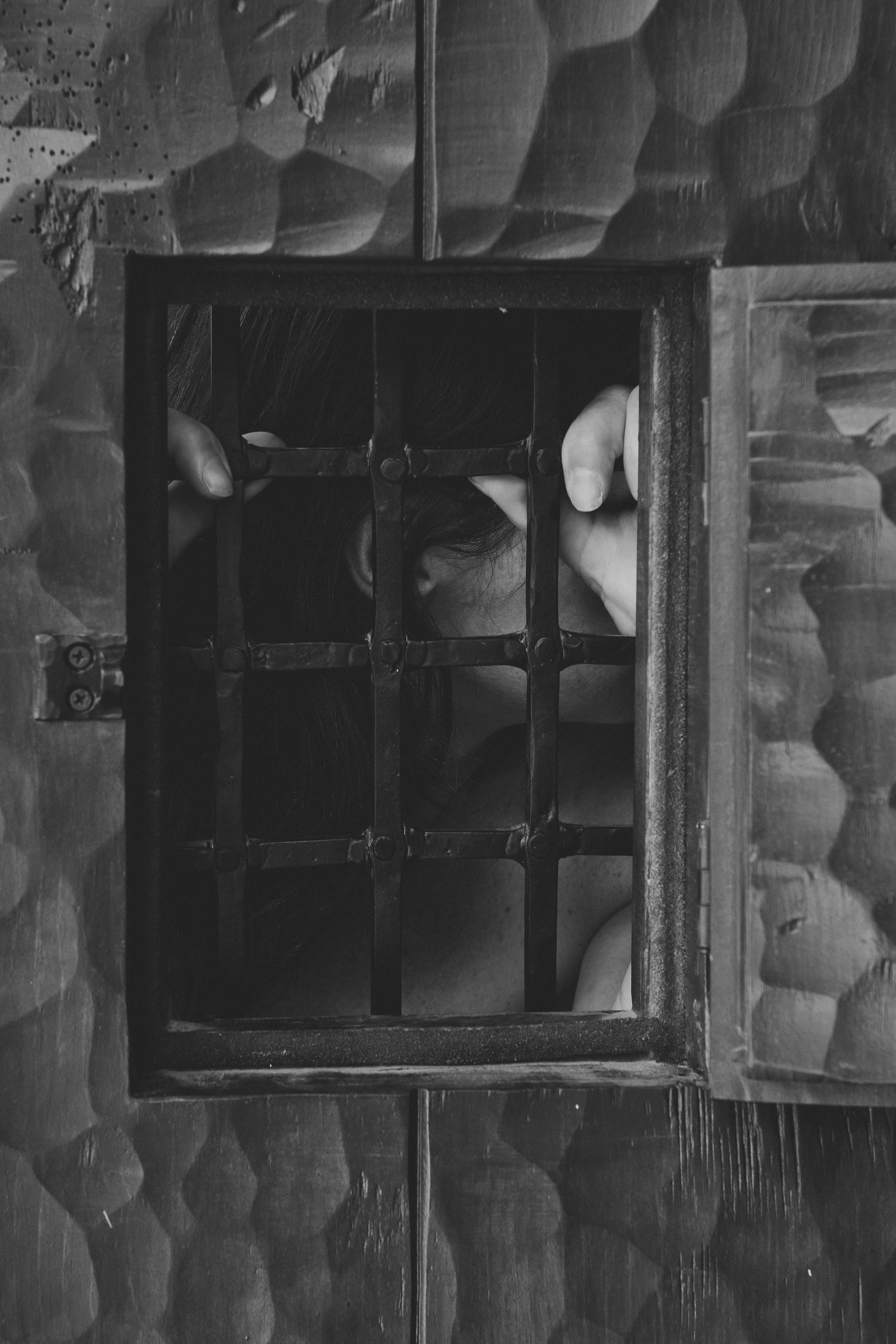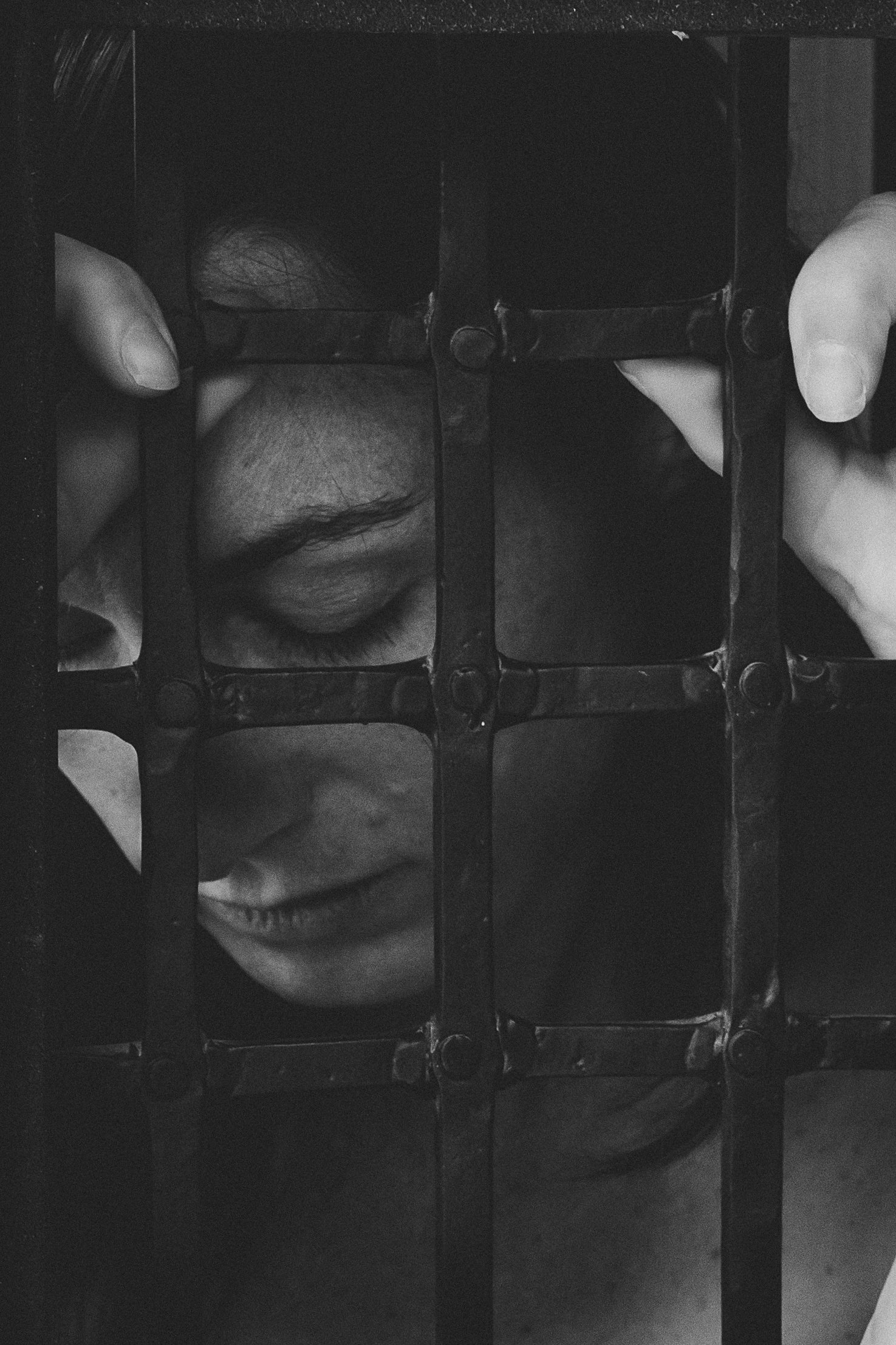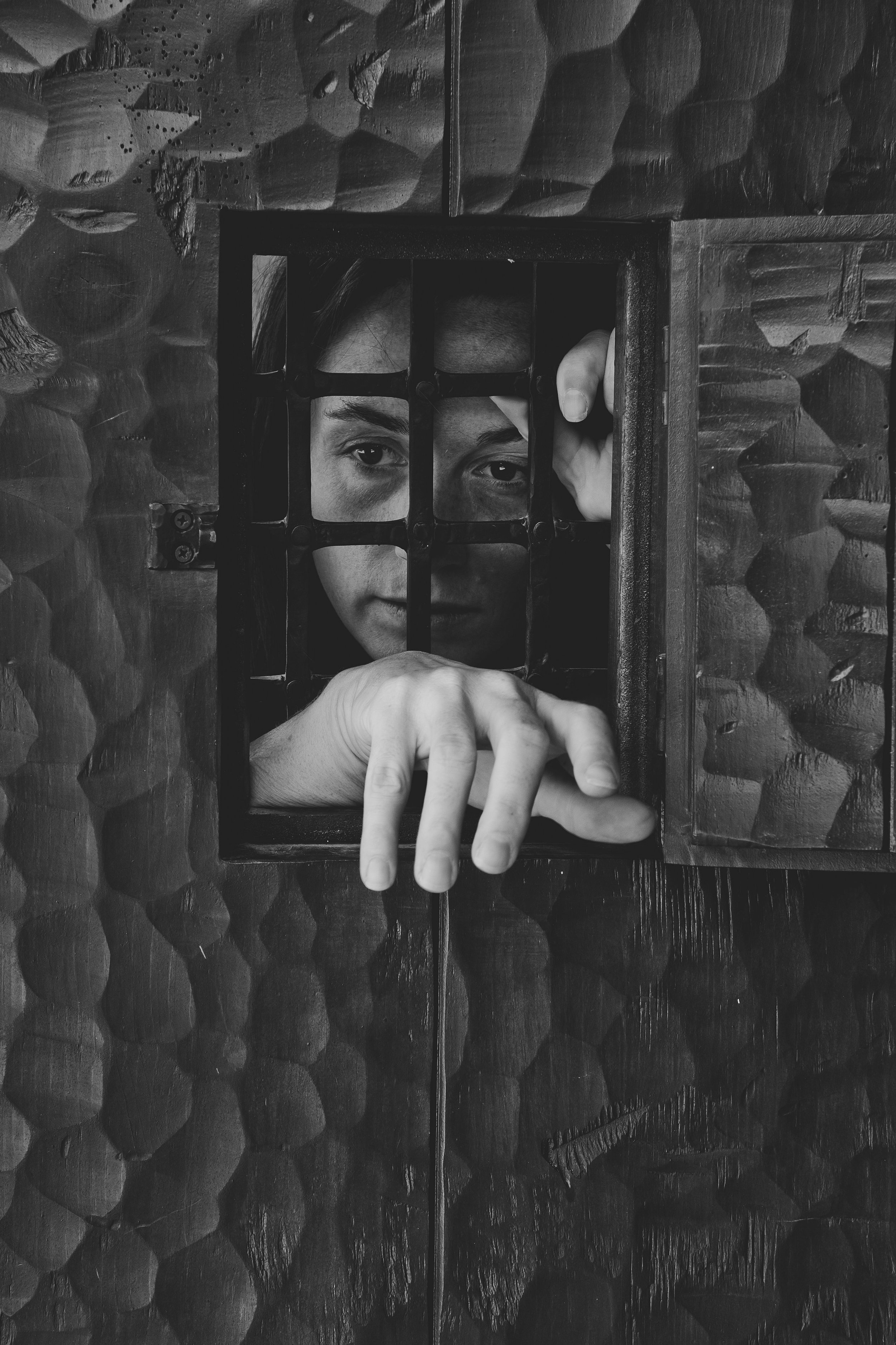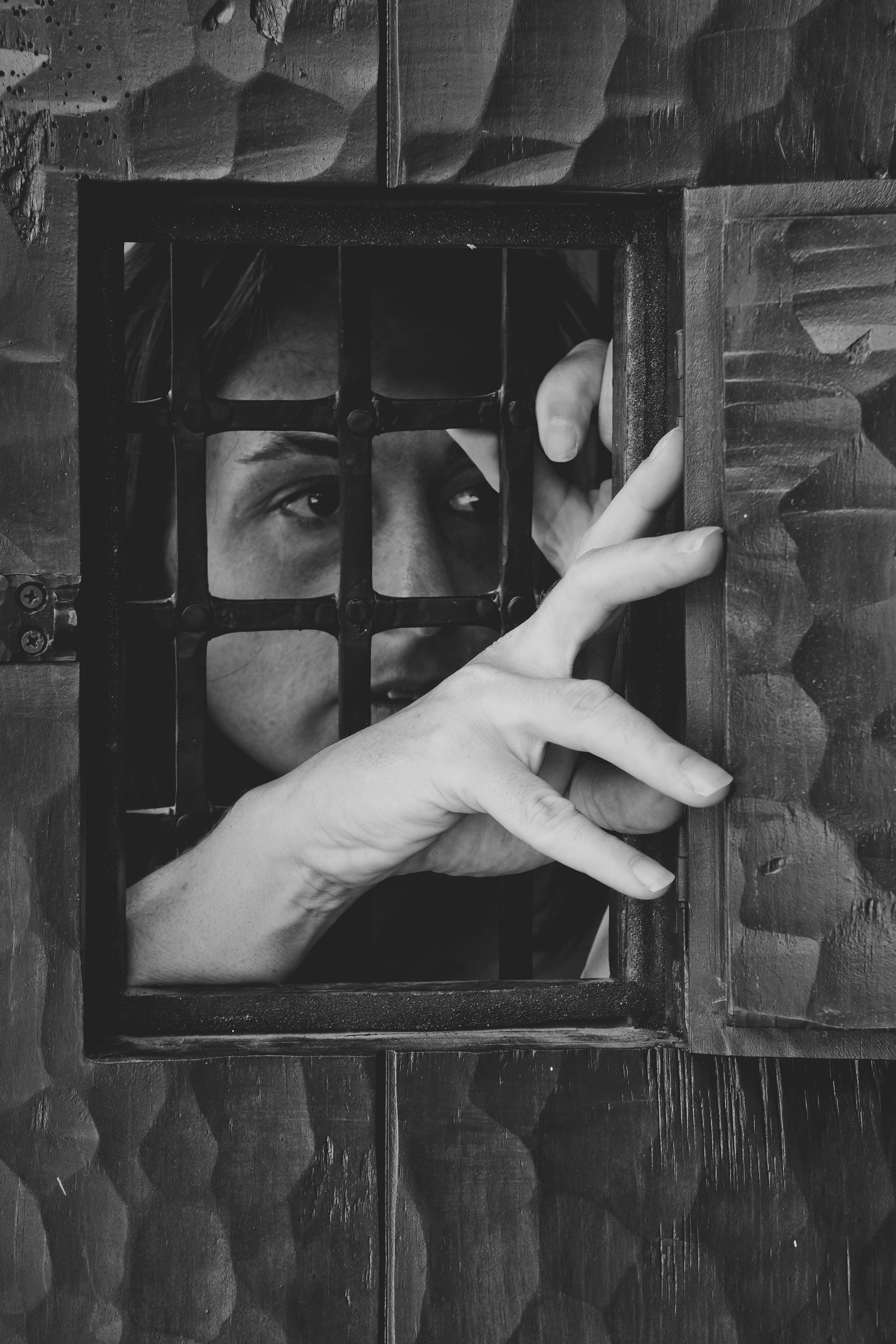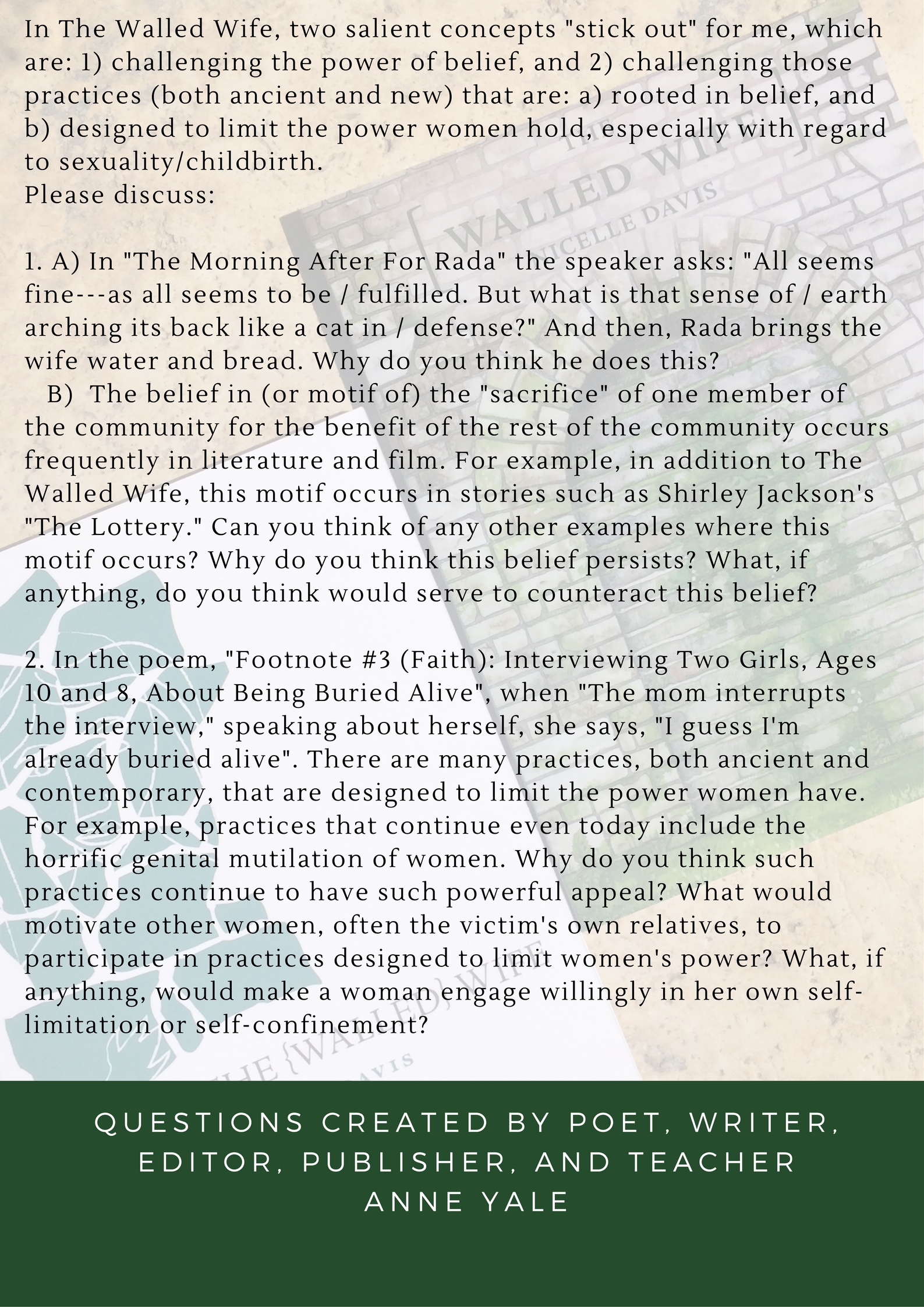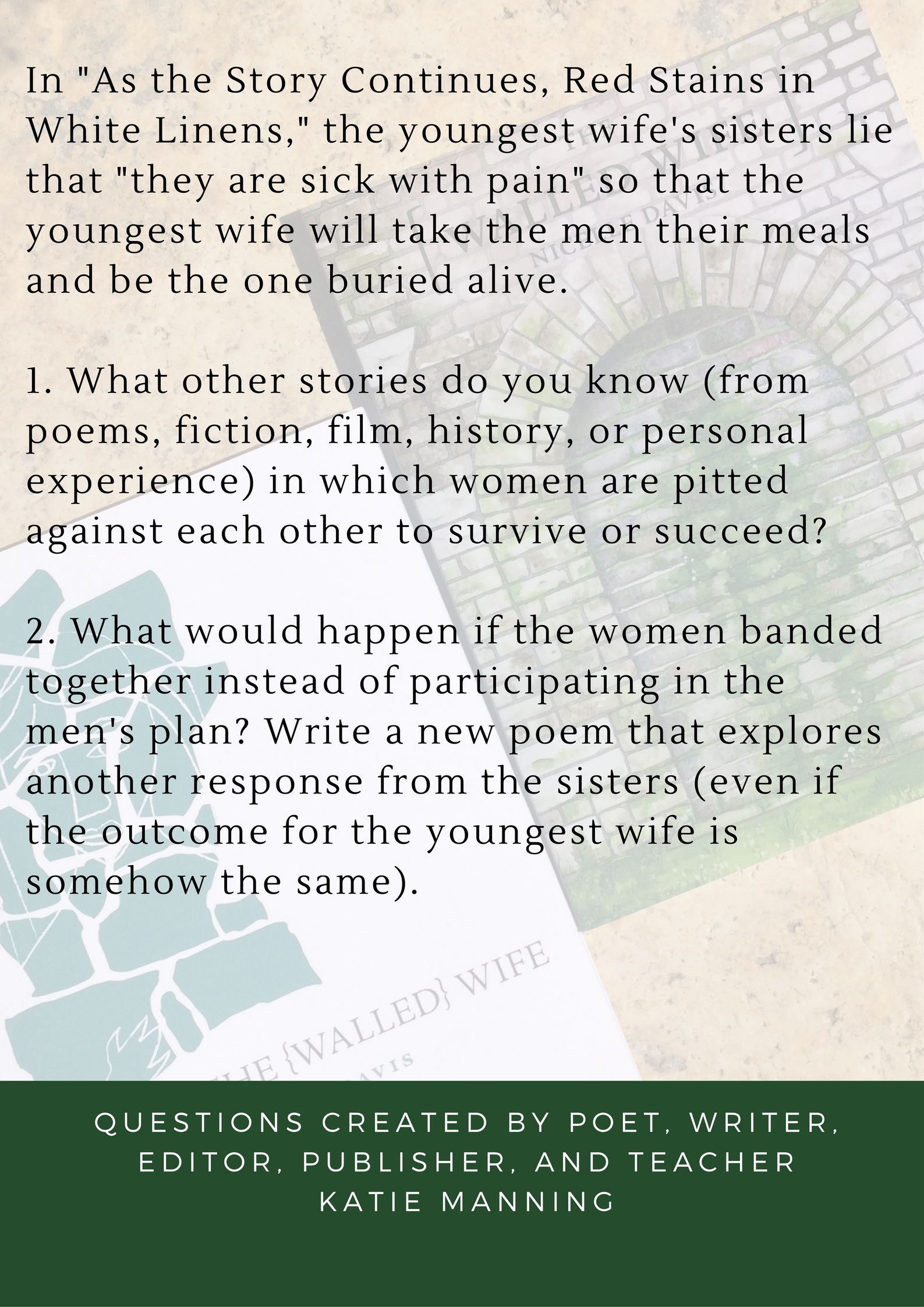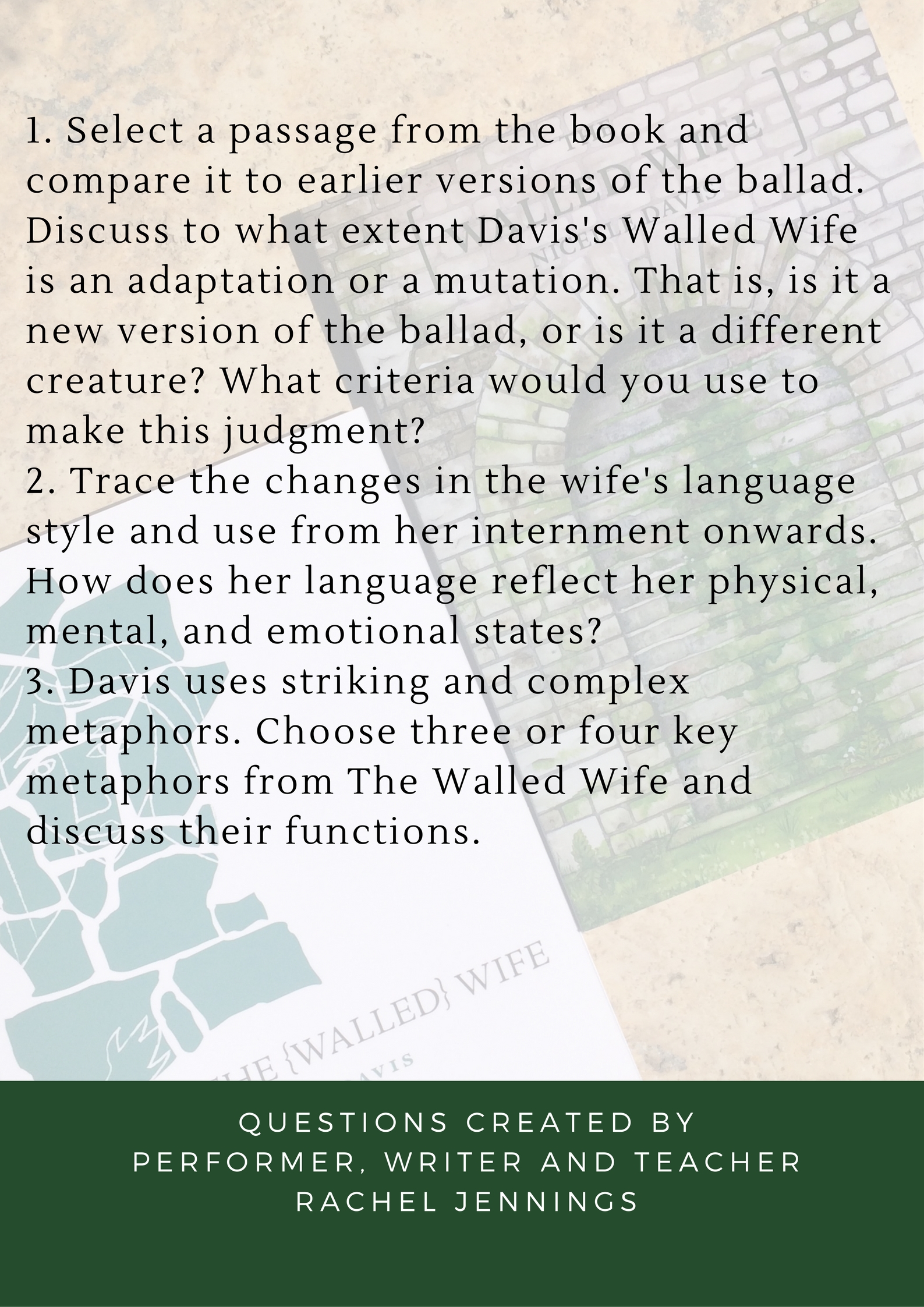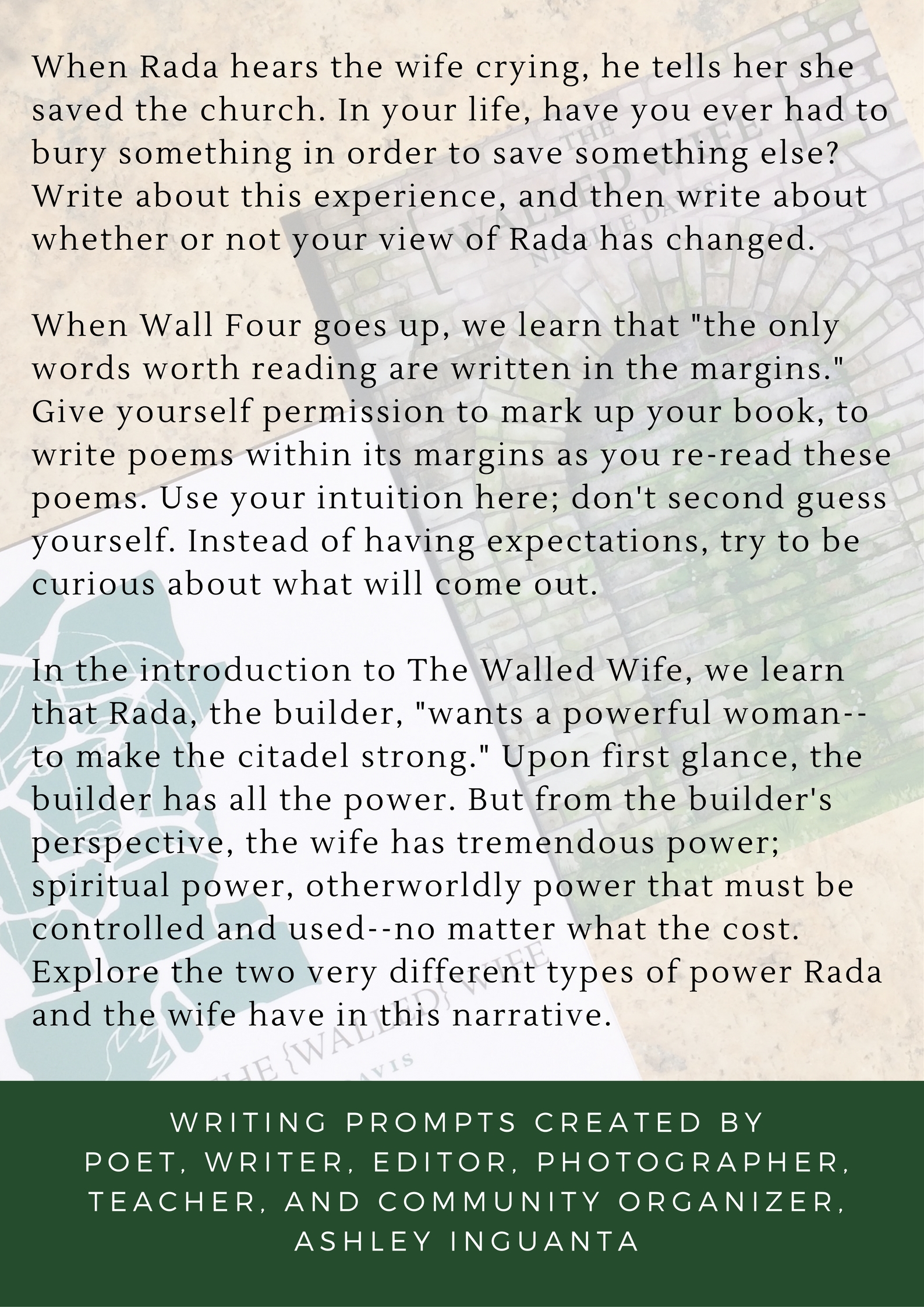by: Nicelle Davis, Publication Date: April 2016, $16.95, ISBN: 978-1-59709-725-3, Shop: IndieBound, Barnes & Noble
Photo by Jamie Clifford
“At the heart of The Walled Wife is an old ballad about the sacrifice of a woman, by building her into the wall of a structure under construction (!!) This practice was believed to ensure the building’s completion and durability. While the poems that compose the book take inspiration from this historical source (and from subsequent commentary on it) they cast a wide net, touching on mythology, feminism, folklore, philosophy, primal fears, love, entomology, self-harm, multiple selves, and more, riffing in ingenious ways on their subject. Particularly notable is Davis’s ability to get inside the heads and suffering bodies of her characters. She mines her material with abject, reverberant humanity. Graphically inventive, and necessarily obsessive, The Walled Wife breathes new, eerie life into a disturbing ancient ritual, laying bare its many metaphors and contemporary relevance.”
—Amy Gerstler
“What does it mean to have a ‘soul in the building’? What is the space inside a wall that is also a crypt, an ‘immured’ beloved, an ‘emptiness unfathomable,’ an architecture that is also a ‘consciousness’? Nicelle Davis has created a remarkable and searing work of ‘red stains and white linens.’ Light, body, gold, silver, excrement, moon, sun, copulating finches, finitude: ‘You are not to blame for rotations,’ writes Davis. I can’t quite put into words the ache in my own bones, the pressure before weeping, that built in my own heart as I read, listened to and encountered her extraordinary work. ‘I am becoming red clay,’ writes Davis. From the inside of the book. Which reaches us. A cry. The particular mixture of longing and acute loss that returns us to our own human experience: the livid, temporary history of being here at all: on the earth.”
—Bhanu Kapil
photo by michael everett crawford
A woman is buried so a church will rise. Nicelle Davis’ The Walled Wife unearths from the long-standing text “The Ballad of the Walled-up Wife,” a host of issues that continue to plague women in the contemporary world: the woman’s body as sacrifice; the woman’s body as tender or currency; the woman’s body as disposable; the woman’s body as property; the woman’s body as aesthetic object; the woman’s body unsafe in the world she must inhabit, and in the hands of the people she loves. By unearthing “this fucked-up story,” found in a centuries-old folktale (The Ballad of the Walled-Up Wife) Nicelle Davis’ poems remind us that narratives, like the individuals and cultures that produce them, are imperfect structures. However, through her intelligent and effective use of craft and voice, and the heartbreaking vulnerability with which she engages the perspectives within and without the story, Davis avoids simple replication; she does not “rebuild a corrupt structure.” Rather, she exhibits in The Walled Wife the powerful and expansive possibilities of narrative. This collection makes space (in the narrative, and thus in the reader, and thus in the culture) for so much—for remorse from the builder, for sorrow from the husband, but mostly for this sacrificed woman to be angry, to feel betrayed, to be avenged, to tend to her inner life in the hours of her death, to speak her truth, and insist on her humanity. These poems allow the wife to mourn her stolen life, and as we mourn with her, they enrich our possibilities for empowerment and empathy in the narratives of our lives.
--Excerpt from Lauren K. Alleyne’s Introduction to The Walled Wife
Research
Being Buried Alive
I wanted to write a book about architecture—in my research I stumbled across, “The Ballad of the Walled-Up Wife.” This song has inspired more than 700 versions—each describing burying a woman alive.
I was breast feeding my 3 month old son the first time I encountered this poem, 7 years ago; ever since I’ve been asking people to bury me alive, trying to better understand this ballad. One of the many lessons I learned from this experience is that attention is not the same as being seen; I learned how I desperately long to be seen as human (by myself and others). I learned this is a complicated desire—one that I may never fulfill.
Perhaps it isn’t as important to be seen human, as it is to feel human…even if feeling is fleeting? Perhaps? Perhaps is as close as I come to hope in this collection…but there it is, that little glimmer—that spark of hope.
